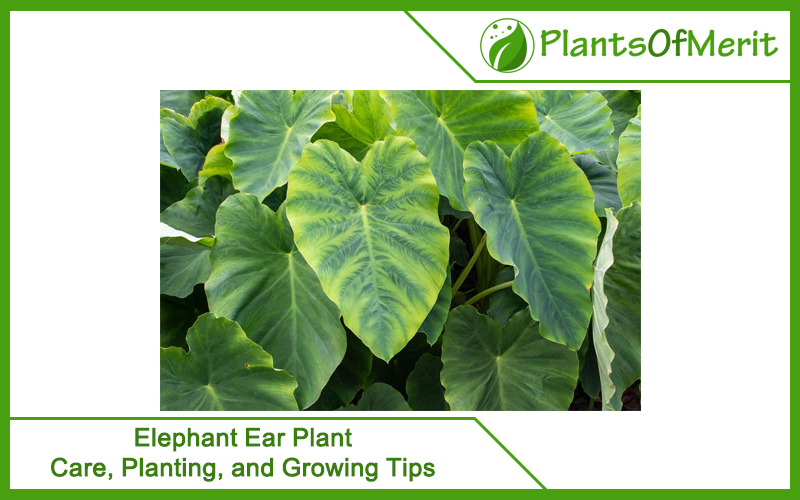Unless you are a gardener who has a special liking for plants and horticulture, chances are that listening to the term Elephant Ear might make you think we are talking about the animal. Elephant Ear plants, on the contrary, are a popular and accessible type of plant that’s available in abundance across the world.
You have your staple fried fair fare and then you have the plants with a larger leaf, especially the pachyderms that are going to leave you speechless. The reason why these plants are termed Elephant Ear is all due to their appearance. Thanks to the flappy and large shape, it resembles the shape of an elephant ear.
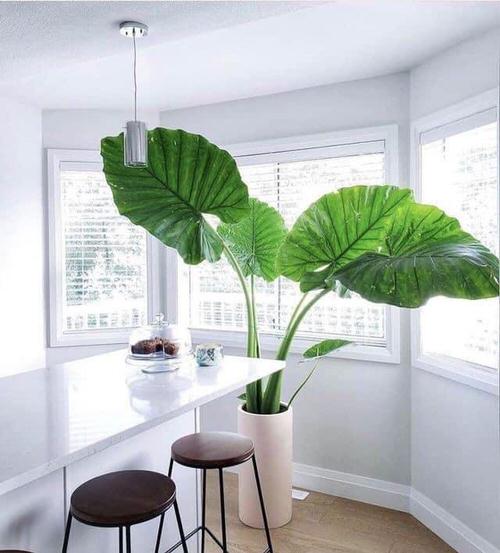
Given how gigantic and beautiful these plants are, as a plant lover, you’d want to invest in buying one or maybe a few along the way. If you are considering buying an elephant ear plant and you don’t have a lot of ideas about its care, planting, and growing tips, this article should give you all the details.
Elephant Ear Plant – Overview
Before we individually break down every one of the details concerning the Elephant Ear plant, let us walk you through a basic introduction and overview of each one of them.
| Element/Characteristics | Description |
| Common name | Elephant Ear, Chembu, Dasheen |
| Scientific name | Colocasia / Xanthosoma |
| Family | Araceae |
| Origin | Oceania, South America, Southeast Asia |
| Water | High |
| Light | Shaded or partial shade |
| Height | Up to 8-9 feet |
| Temperature | 65-70 °F |
| Fertilizer | Medium |
| Humidity | Medium to high |
| Propagation | Seed, division |
| Pests | Spider mites, aphids |
Elephant ear can be a little difficult to grow, especially if you don’t have a good amount of preconceived knowledge about the same. Ideally, we’d recommend that you start getting your knowledge strengthened first. Understand what’s needed and what are some of the big Nos. Once you familiarize yourself with the needs, it becomes easier for you to navigate through them.
What are the Different Types of Elephant Ear plants?
If there is one thing unique to the elephant ear plants, it is the list of available varieties. There are quite a few to look into and we’d highly recommend that you explore them all. Each one of them is different from the other – both in terms of appearance and the overall classification.
Here’s a quick breakdown of the same:
1. Alocasia
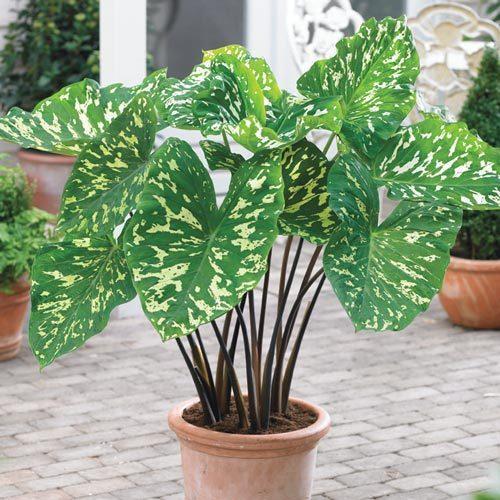
Let us start the list with one of the most common and accessible variants, which is also one of the largest. The leaves are nothing short of gigantic, which is one of the reasons why it is such a popular choice to indulge in.
The plant originated in Asia and Eastern Australia and is a very popular type of indoor plant. However, the good thing about this variant is the diversity. You get access to over 79 different species of alocasia plants.
The variant of Alocasia that is popular in Vietnam, known as the vietnamensis, is used as an herb in soups and even eaten in stir fry dishes. However, cooking and eating alocasia involves a lot of risks and biohazards too. If the plant isn’t cooked all the way through, there are chances that it might end up causing even worse impacts on the body.
2. Caladium
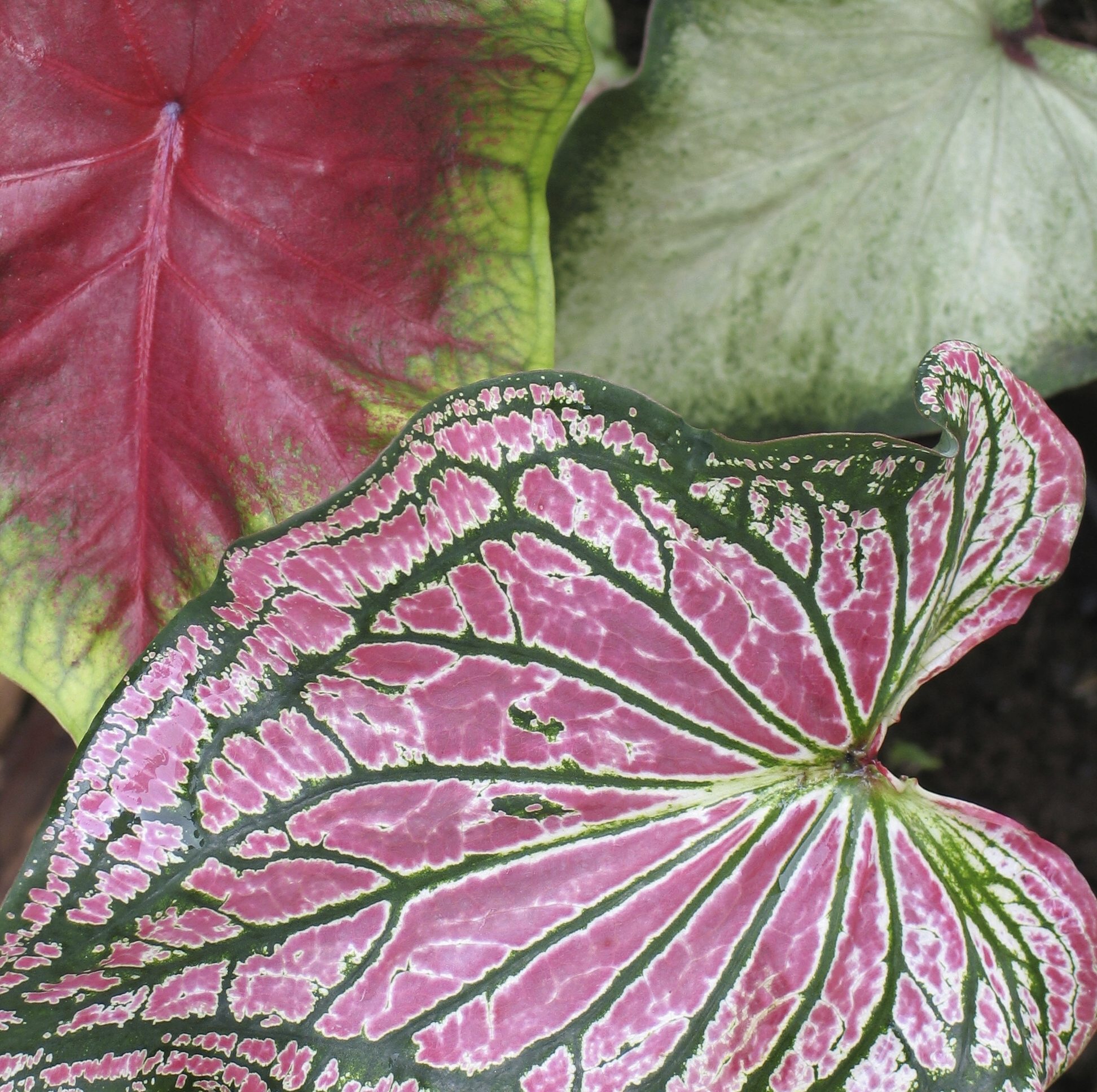
If you want to spruce up the look of your home with a type of plant that’s not green, Caladium is a good alternative. The good thing about this plant is its diversity. It is often known as Angel Wings and Heart of Jesus.
However, what sets them apart from the other types is the color combination. Instead of featuring different shades of green on the leaves, it consists of bright red and maroon in the leaves. Caladium is popularly found and grown in Central and South America, so you will find them in abundance in the neighboring countries.
They are also sparingly found in some parts of India and Africa. However, the prevalence is quite low.
3. Colocasia
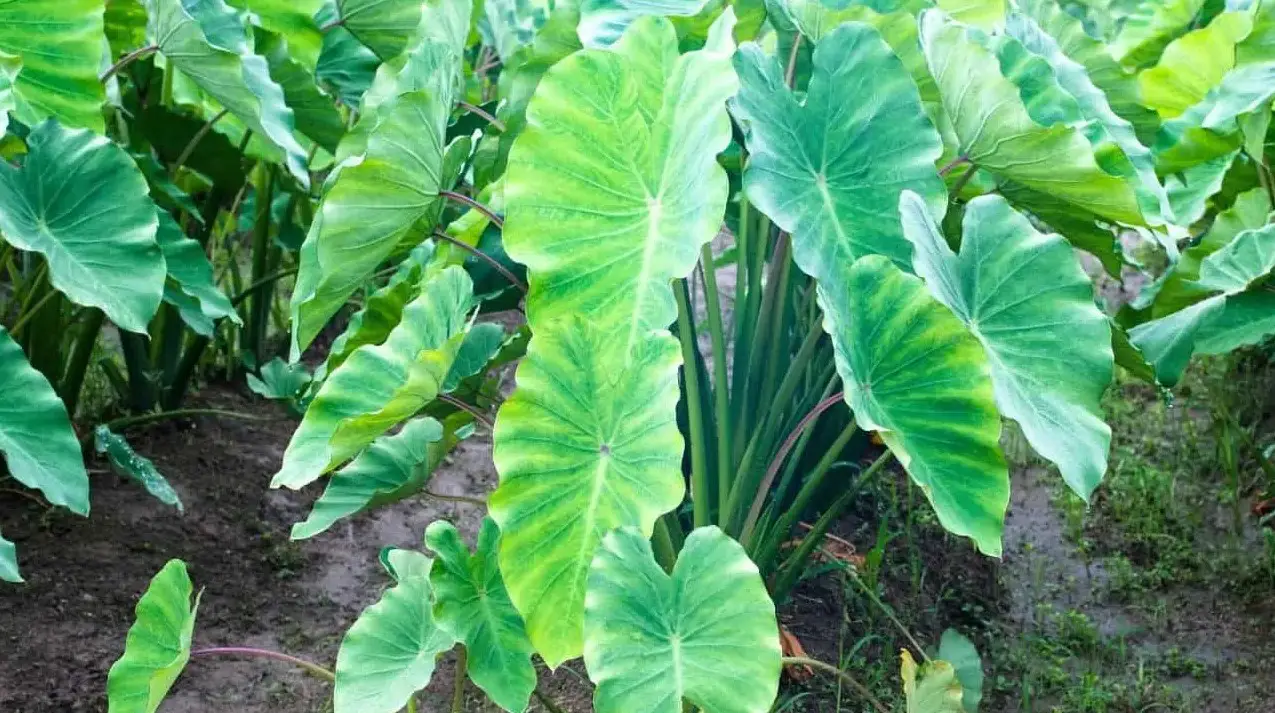
When talking about the elephant ear plant, Colocasia is the most widely known type. It is easily accessible, very large, and expansive in terms of its appearance and is found in abundance in South Asian countries, including India.
Although it is cooked and eaten across multiple Asian and African countries, the plant has pointed and sharp calcium oxalate needles on them, which can cause itching and irritation if not cooked properly. They have to be cooked optimally and throughout to ensure that the person eating them doesn’t experience the issues.
The plant’s root is often fermented and eaten as well. Adding some sort of citrus to the dish while cooking reduces the risks of itching after eating it.
4. Xanthosoma
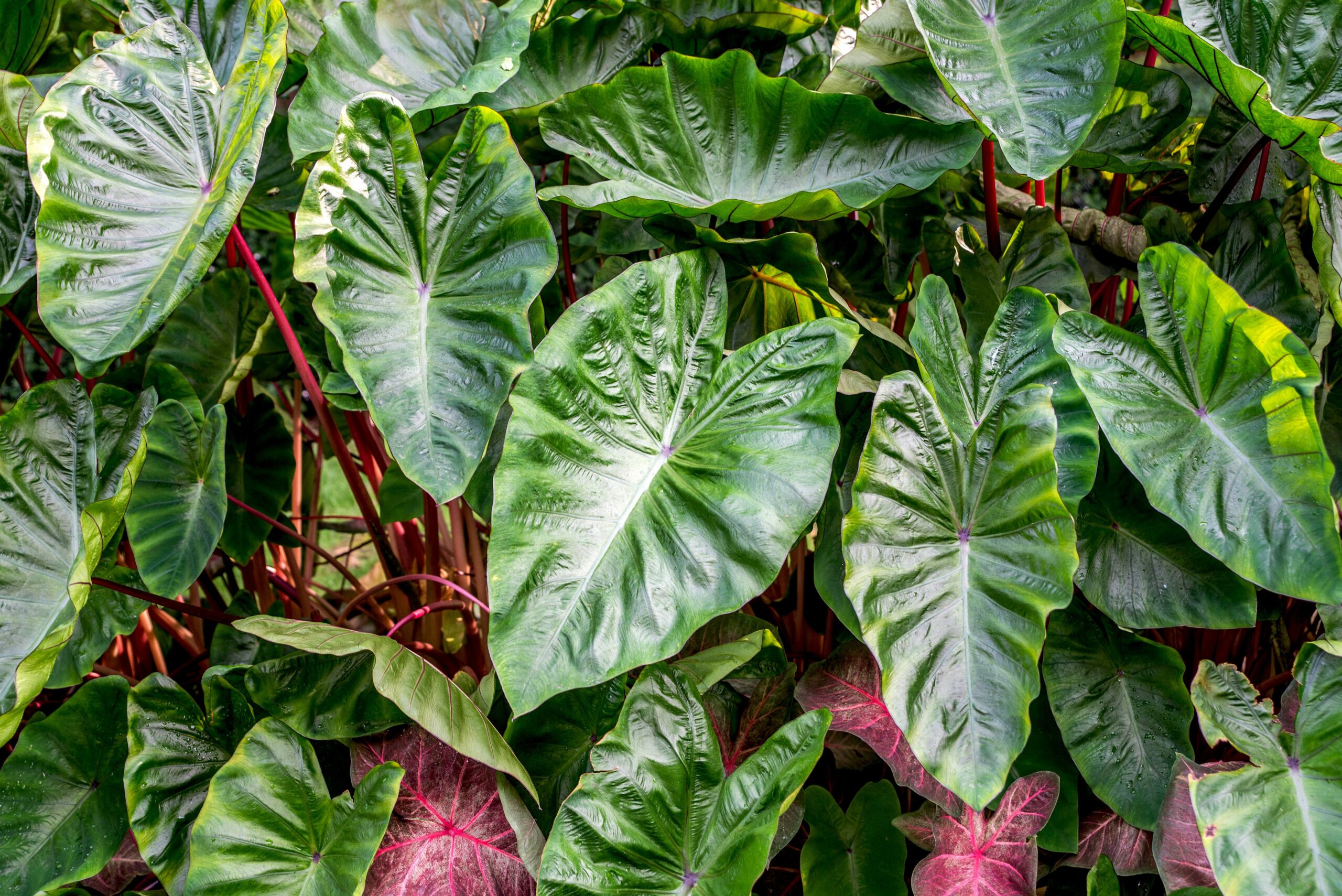
Last on the list is Xanthosoma, which is quite a popular type of Elephant Ear plant available in several parts of the United States. It is also a priced food staple and a lot better and safer to consume compared to Colocasia.
The plant has a large banana leaf-like appearance with yellow tissues running down the expanse of the leaf, which gives it the tell-tale name that you know about it. Surprisingly enough, 75 different types of Xanthosoma are known to man.
When it comes to discussing the different varieties of Elephant Ear plants, we have the top 11 lined up for you:
- Amazonica – features a bright greenish-blue color with scalloped edges
- Bikini tini – grows a lot taller than most of the other variants and has a bright green foliage
- Black beauty – features deep purple-colored leaves with an outline of green and yellow around the perimeter
- Black magic – features deep purple-colored leaves like black beauty
- Black stem – bright and large green leaves and black-colored stems
- Calidora – larger and bright green colored leaves with a ribbed appearance
- Chicago harlequin – giant green leaves with light-colored blotches
- Diamond head – glossy and bright deep purple-colored leaves
- Elena – bright neon green-colored leaves
- Frydek – deep green foliage with bright white ribs and stems
- Illustris – purple and green colored leaves
- How many of these variants of elephant ear plants did you know of?
How to Plant the Elephant Ear Plants?
Simply knowing the types and variants of elephant ears isn’t enough, especially if you don’t know the right way to plant them and take care of their growth.
Since these plants generally grow up to 8-9 feet and have very large foliage, people prefer growing them outdoors for the best appearance. So, you can plant them in your outdoor garden once you buy them from the market.
Although the plant doesn’t need or enjoy direct sunlight, you can’t expect to get the most out of the plant by planting it during extreme frosty winters. The ideal time to plant them is right after the winter recovers and you start witnessing a bit of summer peeking through.
Ideally, you want to plant them outdoors when the temperature is over 50 degrees Fahrenheit. If the temperature falls below that, it can lead to complications in the growth, which is the absolute last thing you want.
Handling the Bulbs and Seeds
As we mentioned in the table, Elephant Ear plants can be grown from seeds and bulbs, and roots too. So, how do you handle the same?
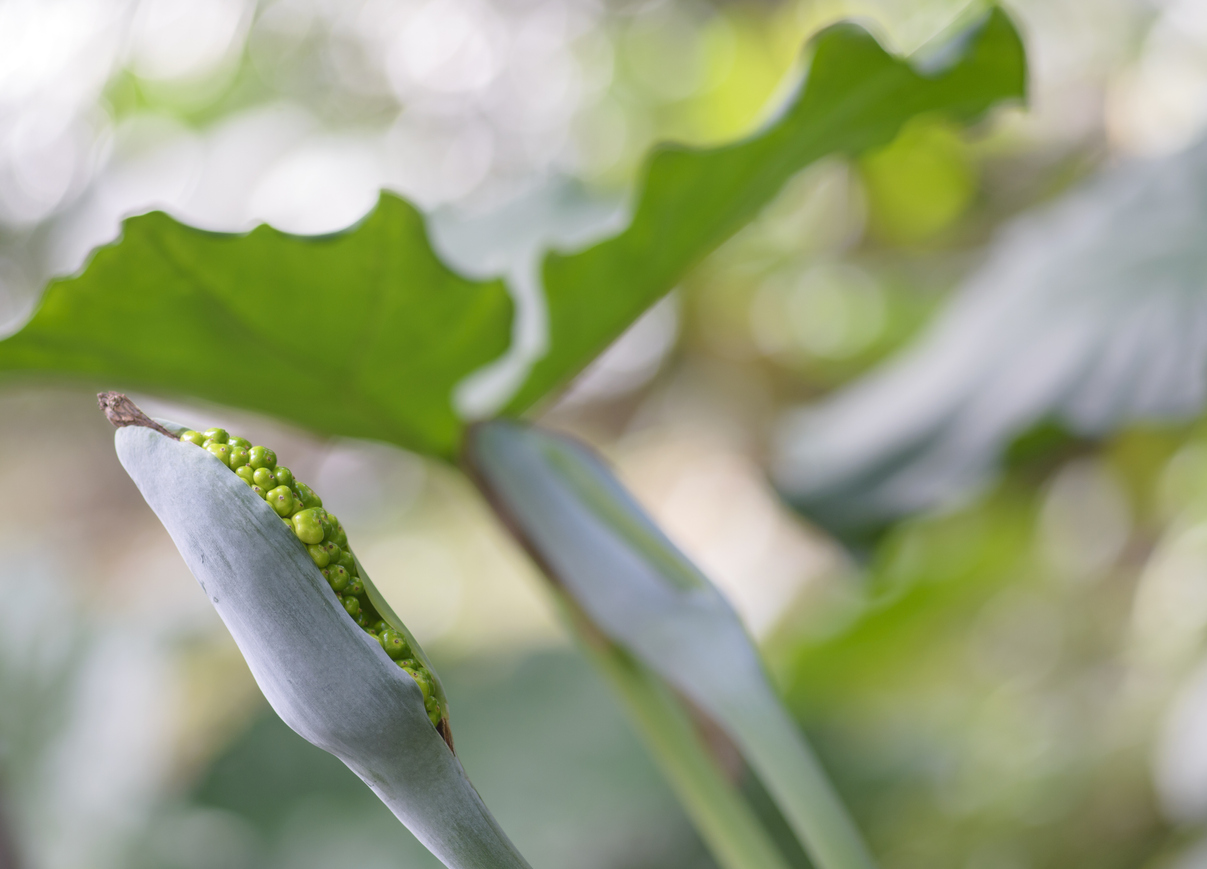
When you are using the bulb, you want to ensure that you plant it 2-4 inches from the surface of the soil. Anything deeper than that will end up damaging the plant altogether and alter its growth exponentially.
Colocasia, surprisingly, can be potted in shallow water or standing water and with proper care; they can grow without any hassle.
When it comes to planting the seeds for the elephant ear plant, we’d recommend that you sow the seeds very close to the surface of the soil and then let the plant strengthen its roots for up to 21 days, following which you can consider transferring it to a larger area.
Where to plant?
With the and how out of the way, the next thing worth considering is where should you plant the seeds or the bulbs?
Elephant ear plants don’t need direct sunlight. If you leave the plant in the direct sunlight, it will exponentially affect the growth of the plant, something that you don’t want after putting in so much hard work.
So, choose a shady spot around your garden or backyard for planting the crop. A few variants of elephant ear plants like Colocasia and Caladium can be grown in a greenhouse as well, in case you are interested in that.
However, we won’t recommend doing it with the types of elephant ear plants that tend to grow very tall.
How to Care for the Elephant Ear Plant to Ensure Optimal Growth?
With the basic growing tips out of the way, the next thing that we need to focus on is the care tips. How should you care for the individual plants?
Since the plants are quite hardy, growing them isn’t as complicated as you might think. Just ensure that you stay vigilant of pests and browning of the leaves, which are two of the biggest issues.
Some of the other care tips include:
- Water requirements
Elephant ear plants require a lot of water and moisture. If you fail to provide them with the needed moisture, they will die. That’s one of the biggest factors that they are very sensitive to. Given that a few types or variants grow directly in the standing water, it isn’t surprising that the ones growing on the soil need a good dose of water daily.
Since they soak up a lot of water quite quickly, it isn’t surprising that you need to compensate for that lost water quite frequently. If you notice browning on the edges of the leaves, it is a sign that the plant is either getting very less water or too much sunlight.
- Sunlight needs
Moving on to the sunlight requirements. They don’t need direct sunlight. So, find spots around your garden that have partial shade. Completely shady places are the best pick since they keep your plant thriving in the long run.
If the plant is getting exposed to excess sunlight, chances are that the same will eventually lead to complications of browning of the leaves. Very cold temperatures can also cause browning, so you need to be aware of that as well.
- Fertilizer requirements
Do you need to use fertilizers while growing elephant ear plants? The answer is yes. You can go without using one but using fertilizers contribute to the overall quality of the plant.
Enriching the soil with organic compounds ensures optimal growth of the plant without lingering attacks from the pests and diseases that are quite common too.
Also, when you are planting the elephant ear plants, one thing that you need to be extremely careful about is the spacing. You want to ensure that the plants have enough space among them to enable the other plants to grow without needing to compete.
What are some of the Pests and Diseases to be aware of?
Like any plant and its care tip, even with elephant ear plants, you have to be mindful of the pests and diseases.
There are a few common types of diseases worth considering:
- Leaf blight – a common fungal disease that dries the plant and requires excessive watering
- Bacterial leaf spot – caused by a bacterial attack that leaves brown spots all over the leaves
- Phyllosticta leaf spot – a fungal infection that is caused by excess moisture in the plant
Besides these diseases, there are a few common pests that the growers need to be mindful of. These include:
- Spider mites – hide under the leaves and create webs and eat away at the leaves
- Thrips – includes thunder flies and storm bugs that cause fungal spores and damage to the leaves
Staying vigilant is crucial to preventing these diseases and different types of pests.
FAQs
1. Where is the best place to plant an elephant ear plant?
The versatility of the Elephant Ear plant is what makes it such a great plant to grow. You can grow it in the sun or even in a partly shaded area in the backyard. Most varieties of this plant grow well in partial shade. However, if you are growing the darker leaf variants, they will need direct sunlight during the day.
2. When should elephant ears be planted?
The ideal time to grow the Elephant Ear plant is during the spring season once all the frost has withered off the surroundings. They do grow better in tropical weather conditions, so you need to ensure that the soil is quite warm before you go ahead and plant them.
3. Do elephant ear plants grow well in pots?
Container growing is possible with Elephant Ears if you don’t have the space to grow it in the ground. But you do have to provide the plant with all the optimal growing parameters to ensure that they thrive in the enclosed and limited space. Proper soil and adequate sunlight are also mandatory for growing this plant.
4. How often should I water elephant ears?
Elephant Ear plants need to be watered weekly, especially during the growing season. Also, the watering depends on the humidity in the climate. If the humidity is high, it signifies that the plant won’t require much watering. However, if the humidity is low, it is ideal to water more frequently.
5. What is a good fertilizer for elephant ears?
If you are growing an elephant ear plant, it is ideal to use a water-soluble fertilizer that ensures optimal growth without any compromise. The 20-20-20 fertilizer is what works a lot better when it comes to the balance of nutrition.
Conclusion
If you were considering growing Elephant Ear plants, these are some of the important factors that you possibly need to know of. Just ensure that you have a good idea of the care tips and buy the variant that will sustain in the kind of climate you live in.

